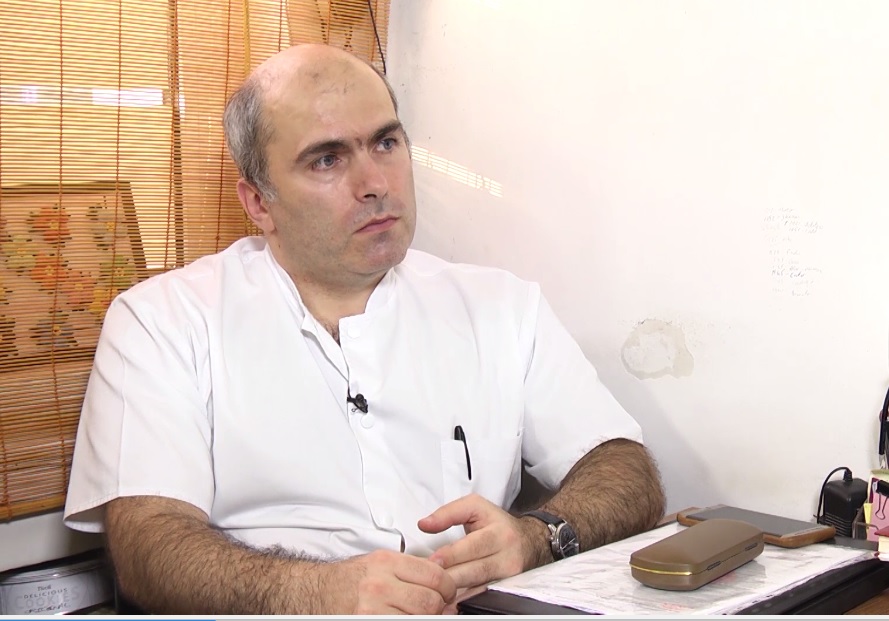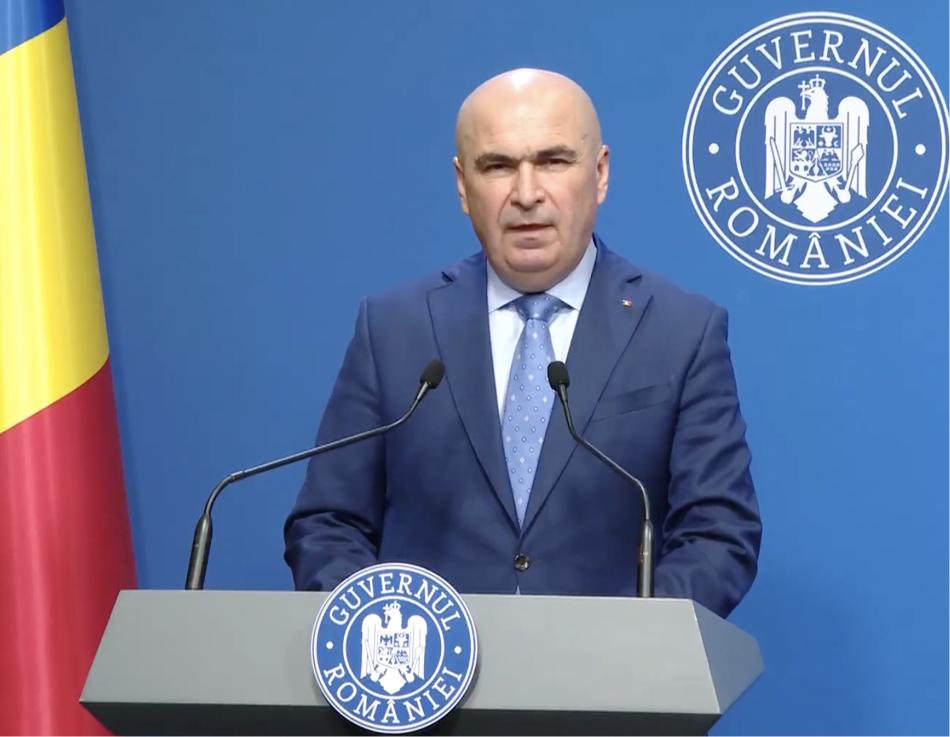Institutul Oncologic ”Prof. Dr. Alexandru Trestioreanu” București are un nou director medical, de la jumătatea acestei luni . Este vorba despre unul dintre cei mai apreciați chirurgi oncologi din generația medicilor tineri din Institut, dr. Bogdan Tănase.
Numit prin decizie a ministrului Sănătății, medicul Bogdan Tănase preia mandatul de director medical într-un moment foarte dificil. Ca orice spital, și Institutul Oncologic București este expus riscului infecțiilor cu SARS-CoV-2, iar măsurile de precauție privesc atât pacienții, cât și personalul medical. Una dintre cele mai mari probleme este reducerea activității chirurgicale ca urmare a unui ordin de ministru prin care s-au limitat intervențiile chirurgicale strict la urgențe din rațiuni de economisire a resurselor umane și tehnice de pe zona ATI. La Institutul Oncologic București se operează la 25 %-30% din capacitatea obișnuită.
Nemulțumit de acest ritm și de dramele pacienților din spatele acestei statistici, medicul oncolog a lansat, la începutul acestei luni, o interpelare pe Facebook prin care arăta că decidenții trebuie să găsească o soluție pentru pacienții cu afecțiuni oncologice care au nevoie de intervenții chirurgicale. ”Sunt pacienți cronici, nu sunt urgențe, dar multe din intervențiile chirurgicale oncologice au un timing precis în raport cu restul tratamentelor. Ce se întâmplă cu acești pacienți? Când și cum îi putem opera în siguranță?” Unul dintre comentariile care răspundeau mesajului a venit din partea secretarului de stat din Ministerul Sănătății, Horațiu Moldovan, care i-a sugerat medicului să-i transmită o propunere concretă. Cu ajutorul mai multor colegi din specialitate, medicul a transmis un ghid de conduită chirurgicală pentru pacienții oncologici care ar urma să fie operați în timpul crizei COVID-19, dar, o decizie se lasă, în continuare, așteptată.
Medicul primar Bogdan Tănase, noul director medical al IOB, este și președintele Alianței Medicilor, calitate în care a fost prezent în spațiul public cu numeroase luări de poziție în apărarea halatelor albe și a drepturilor acestora. Despre medicul chirurg specializat în chirurgie toracică oncologică, medikatv.ro a mai scris AICI.
Provincial Gambling Differences: Casizoid’s Comprehensive Regional Overview
Canada’s gambling landscape presents a fascinating tapestry of regional differences, shaped by provincial jurisdiction and cultural attitudes toward gaming. Each province operates under distinct regulatory frameworks, creating a complex mosaic of gambling opportunities and restrictions that reflects local values and economic priorities. Understanding these provincial variations is essential for comprehending the broader Canadian gambling ecosystem and its evolution over the past several decades.
Historical Development of Provincial Gambling Authority
The foundation of Canada’s current gambling structure stems from the 1985 Criminal Code amendments that transferred gambling authority from federal to provincial governments. This pivotal change allowed provinces to develop their own gaming policies, leading to dramatically different approaches across the country. British Columbia emerged as an early pioneer, establishing comprehensive casino operations in the 1990s, while provinces like Prince Edward Island maintained more conservative stances for decades.
Ontario’s approach exemplifies the complexity of provincial gambling evolution. Initially focused on charitable gaming and lotteries, the province gradually expanded into casino gaming, then online platforms, culminating in the 2022 launch of regulated online gambling markets. This progression reflects broader Canadian trends where provinces have systematically expanded gambling offerings to capture revenue and regulate previously underground markets.
The Atlantic provinces demonstrate another evolutionary path, with New Brunswick, Nova Scotia, and Newfoundland each developing distinct regulatory approaches despite similar geographic and demographic characteristics. New Brunswick’s emphasis on video lottery terminals contrasts sharply with Nova Scotia’s focus on traditional casino gaming, illustrating how provincial autonomy creates diverse gambling landscapes even within similar regional contexts.
Current Regulatory Frameworks and Market Structures
Today’s provincial gambling markets operate under vastly different regulatory structures, creating unique opportunities and challenges for operators and players alike. Alberta’s model emphasizes private sector involvement through the Alberta Gaming, Liquor and Cannabis Commission, allowing for innovative partnerships between government and private operators. This approach has generated substantial provincial revenue while maintaining strict regulatory oversight.
Quebec represents another distinct model, with Loto-Québec operating as a crown corporation managing all forms of gambling within the province. This centralized approach extends to online gambling, where Quebec has maintained exclusive control over digital gaming platforms, creating a closed-loop system that keeps gambling revenue within provincial borders. The province’s French-language requirements and cultural considerations further distinguish its gambling market from English-speaking provinces.
Research platforms like Casizoid have documented how these regulatory differences create significant variations in game availability, taxation structures, and player protections across provinces. Saskatchewan’s approach to First Nations gaming agreements differs substantially from British Columbia’s model, reflecting unique Indigenous relationships and treaty obligations that influence gambling policy development.
Manitoba’s gaming landscape showcases another variation, with the Manitoba Liquor and Lotteries Corporation operating under a hybrid model that combines government oversight with strategic private partnerships. This approach has enabled the province to modernize its gambling offerings while maintaining public ownership of gaming assets, demonstrating how provinces can adapt regulatory frameworks to local political and economic conditions.
Economic Impact and Revenue Generation Models
Provincial gambling revenues reveal striking disparities in both scale and utilization across Canada. Ontario generates the largest absolute gambling revenue, exceeding $2 billion annually, while smaller provinces like Prince Edward Island generate modest amounts that nonetheless represent significant portions of provincial budgets. These revenue differences reflect both population size and policy choices regarding gambling expansion.
The allocation of gambling revenues varies dramatically between provinces, with some directing funds toward general revenue while others designate gambling income for specific purposes. British Columbia channels significant casino revenue toward community programs and charitable organizations, creating direct links between gambling activity and social benefits. This model contrasts with provinces that treat gambling revenue as general taxation, highlighting different philosophical approaches to gaming policy.
Economic impact studies consistently demonstrate that gambling’s provincial effects extend beyond direct revenue generation. Employment creation, tourism attraction, and ancillary business development contribute to broader economic benefits, though these impacts vary significantly based on provincial gambling policies. Alberta’s casino industry supports thousands of direct jobs while generating substantial tourism revenue, particularly in Calgary and Edmonton markets.
The emergence of online gambling has created new revenue opportunities and challenges for provincial governments. Provinces that have embraced regulated online markets, such as Ontario, have captured significant digital gambling revenue that previously flowed to offshore operators. This shift represents a fundamental change in how provinces approach gambling regulation and revenue generation in the digital age.
Provincial gambling differences across Canada reflect the complex interplay between federal constitutional frameworks, local cultural values, and economic priorities. These variations have created a unique national gambling landscape where residents experience dramatically different gaming opportunities depending on their province of residence. As gambling technology continues evolving and social attitudes toward gaming shift, provincial differences will likely persist while adapting to new challenges and opportunities. Understanding these regional variations remains crucial for policymakers, operators, and researchers seeking to navigate Canada’s complex gambling environment effectively.














